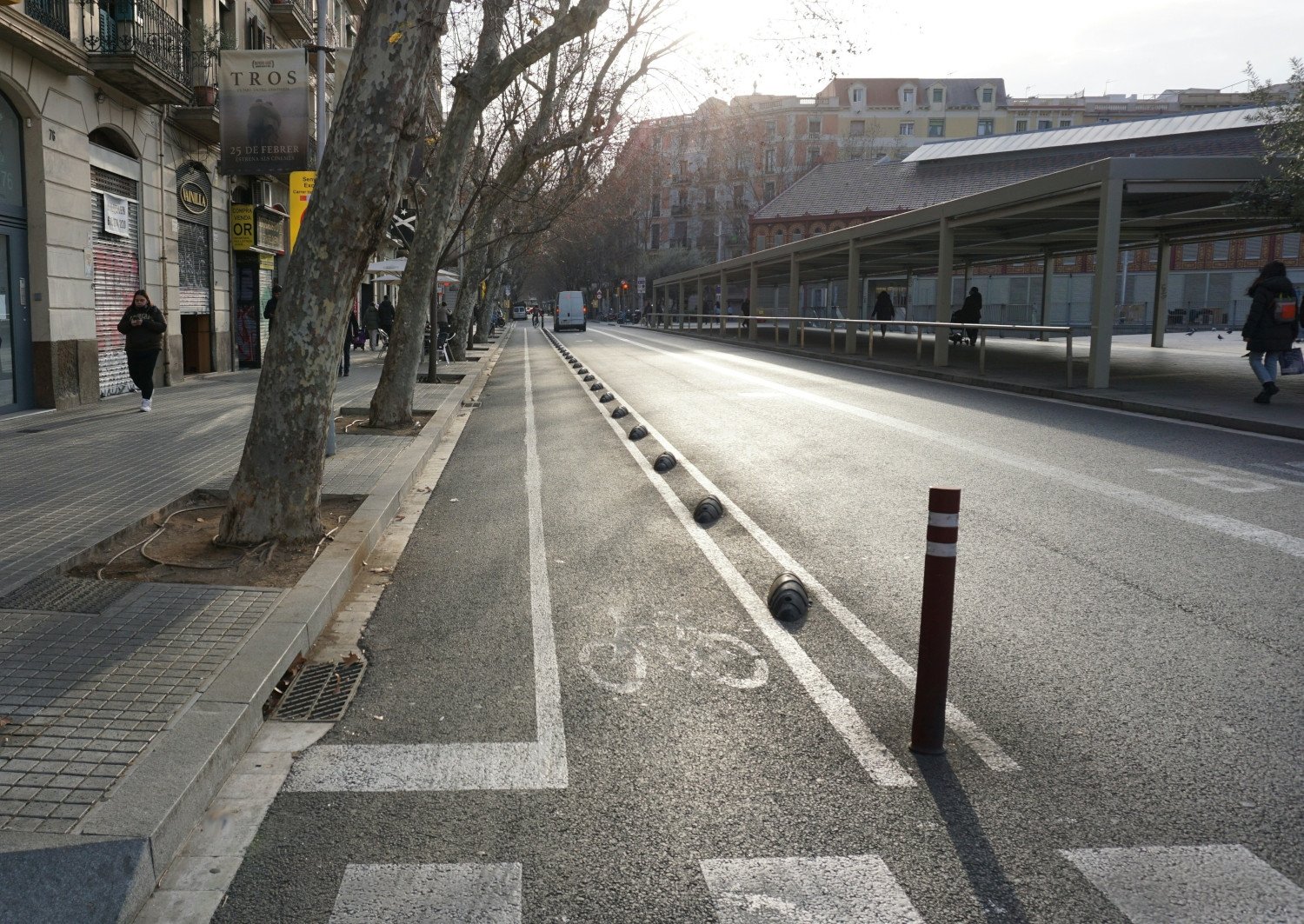If you’ve been reading news over the last decade, you would have certainly come across the term active travel. There have been more and more conversations across the UK – at central and local government levels- about how to improve our cities through the encouragement of more walking and cycling to reduce congestion and pollution, improve air quality, and encourage healthier lifestyles. Street infrastructure has been evolving to accommodate the new goals our society has, and while sometimes overlooked, bollards play an important role in this re-infrastructuring.
From school zones to city centres, bollards help create physical boundaries that protect pedestrians and cyclists while guiding vehicle movement. Bollards can shape safer, more accessible public spaces that support active travel. In this article, we examine how strategically placed bollards contribute to safer, greener, and more people-friendly environments.
What Is Active Travel?
However, we think we should start by clarifying what active travel really is to appreciate how bollards fit the bigger picture. Active travel refers to journeys made by physically active means—primarily walking, cycling, and wheeling. It’s going around on its own steam without relying on an engine. This includes e-bikes, too, even though they technically have a motor that assists movement; however, they can and often require pedalling. Electric scooters, on the other hand, are generally not classified as active travel, despite being convenient and a more sustainable option that requires minimal exertion.
Local authorities, urban designers, and public health advocates have increasingly championed active travel as a solution to urban challenges like pollution, traffic congestion, and sedentary lifestyles. However, active travel can only flourish when infrastructure supports it. That’s where thoughtful bollard placement comes in.
Protecting and Creating Pedestrian Zones
Bollards are frequently used to protect pavements, school entrances, and high-footfall pedestrianised areas from unauthorised vehicle access. This is one of their primary reasons for existence, and when spaced correctly, bollards maintain pedestrian permeability while physically preventing car intrusion—critical near parks, playgrounds, and urban high streets. Making areas that are pedestrian-only safer and well-protected is one way to ensure that people who have chosen an active way of getting around are secure in the knowledge that they won’t be hit by a car.
The expansion of pedestrian areas in cities is another good way to encourage more walking and discourage people from travelling by car in often already congested central areas. This is often achieved by placing bollards in strategic locations, cutting off streets from traffic. There are numerous solutions available, ranging from permanent to temporary ones. When changes to a street are required to last, they typically require permanent bollards, which are installed in the ground and can withstand heavy impacts. On the other hand, for more temporary changes, such as scheduled daily closures or an experiment to see how a no-traffic zone would affect a place, you can use retractable or removable bollards.
Designing Cycle-Friendly Environments
Bollards are widely used to create cycle lanes and improve their safety and effectiveness by creating a clear, physical separation between cyclists and motor vehicles. When placed along the edge of a bike lane, bollards act as a barrier that prevents cars from encroaching into the cycling space. This protects cyclists from potential collisions and helps reduce illegal parking in bike lanes—one of the most common complaints among urban riders. Unlike painted lines, bollards send a strong visual and physical signal that the lane is protected and reserved for bikes.
In residential or low-traffic areas, bollards are often used to implement modal filtering. This involves placing bollards across roads to prevent through-traffic by vehicles, while still allowing access for cyclists, pedestrians, and emergency services. These filtered streets form part of wider strategies, such as Low Traffic Neighbourhoods (LTNs), which aim to make streets quieter, cleaner, and safer for active travel. By removing cut-through traffic, bollards contribute to a more relaxed cycling environment, especially for families and less confident riders.
At busy junctions or road transitions, bollards can help guide cyclists safely into lanes or across intersections. For example, bollards might be placed to protect a cycle lane as it approaches a roundabout or traffic light, ensuring that vehicles do not cut across the cycling path. This use of bollards supports clearer navigation and improves visibility for both cyclists and drivers, reducing confusion and conflict at key points in the network.
Creating Clear Visual Cues for Drivers
Bollards are very good at something else, too – they help visually reinforce boundaries between vehicular and pedestrian or cycling areas. They are usually tall poles which are hard to ignore, be it because of their stainless steel shine, reflective coating or their size. This is indispensable in shared-use spaces or “quiet streets”, as they provide a cue to drivers to reduce speed and be more cautious.
Brightly coloured or reflective bollards can be used in low-light areas or near crossings to increase visibility and slow down traffic—key elements in Low Traffic Neighbourhood strategies. Improving cyclist and pedestrian safety is key to encouraging more people to leave their four wheels at home and choose a more active way to travel.
Bollards may seem like minor details in the grand scheme of urban design, but their role in supporting active travel is far from insignificant. By physically separating vehicles from cyclists and pedestrians, guiding traffic flow, and reinforcing safer shared spaces, bollards help create environments where walking, cycling, and wheeling are not only possible but genuinely pleasant and safe.
As towns and cities across the UK look to reduce congestion, improve air quality, and promote healthier lifestyles, it’s often these practical, everyday elements of infrastructure that make all the difference. Thoughtfully placed bollards are not just safety features—they’re enablers of a greener, more accessible future.
